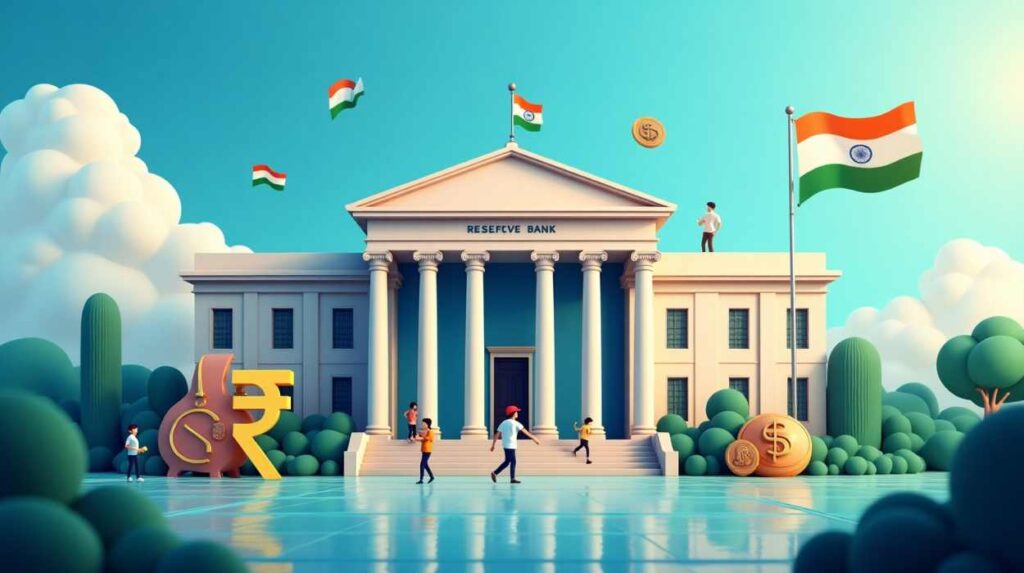Indian finance is rooted in Public Sector Banks (PSBs), the backbone of the country’s economy. While private banks are driven by the profit motive, PSBs function with a twin objective of commercial profitability along with social welfare. PSBs have an obligation to lead government policies and to usher in the expansion of financial services to the country’s farthest reaches. A measure of their size is the fact that PSBs account for more than 65% of the country’s banking system assets, making them a prerequisite for economic stability.
Additionally, their extensive branch network, particularly the rural network, is unmatched, with some of the larger PSBs having more than 10,000 branches across the country. This dominance in the financial sector guarantees that the banks in India have a crucial role in national growth. In this article, we will explore a list of govt banks in India. So, let’s begin!
Role in Economic Growth, Financial Inclusion, Rural & Urban Banking
PSBs play a vital role in promoting balanced economic growth and financial inclusion in the entire country. They do not just perform the activity of banking; they are a catalyst for growth across industries. The impact of the list of government banks in India can be seen especially in the following:
- Promoting economic growth: By extending credit to vital sectors such as agriculture, small and medium-sized enterprises (MSMEs), and infrastructure development, these banks spur industrial and agricultural growth, which is critical to national growth.
- Encouraging financial inclusion: PSBs have led the charge in the Pradhan Mantri Jan Dhan Yojana, a government initiative that sought to offer banking services to all sections of society, making the poorest of the poor access a bank account.
- Rural development support: They extend much-needed credit and financial facilities to farmers and rural entrepreneurs, enhancing living standards and poverty reduction in rural areas. Their extensive branch network makes banking services accessible even in rural villages.
- Urban banking support: In urban areas, PSBs extend a variety of services ranging from retail and corporate banking to investment management to digital payment options, in response to the varied financial requirements of urban residents.
- Administration of government schemes: They are the primary medium for providing government subsidies and welfare benefits directly to the beneficiaries, which helps in maintaining transparency and efficiency in releasing funds.
What are Government Banks in India?
Indian government banks, or Public Sector Banks (PSBs), are those banks where their significant interest, say greater than 50%, is owned by the Government of India or the Reserve Bank of India (RBI). Being a state bank renders them in a unique position, for they are not only commercial banks but also instruments of public policy.
Their government ownership places them on social goals in addition to profitability, making them different from their private sector counterparts. Alongside PSBs and private banks, the presence of Foreign Banks in India also contributes to shaping the country’s diverse banking ecosystem. The structure of ownership is the characteristic of the list of govt banks in India.
Difference Between Public Sector Banks vs Private Banks
| Feature | Public Sector Banks | Private Sector Banks |
| Ownership | Majority share owned by the Government of India. | Majority share owned by private individuals or corporations. |
| Objective | Dual objective of profit and social welfare. | Primarily driven by profit maximization. |
| Reach | Extensive branch network, including rural areas. | Concentrated in urban and semi-urban areas. |
| Governance | Significant government oversight and regulation. | More autonomy in decision-making and operations. |
| Job Security | Generally offer high job security due to government backing. | Performance-based incentives and variable pay structures are common. |
| Focus | Priority sector lending and implementation of government schemes. | Focus on customer-centricity, innovation, and niche segments. |
While government banks (public sector banks) form the backbone of India’s banking infrastructure, the financial landscape is also supported by entities that operate beyond traditional banking—commonly known as non-banking financial companies (NBFCs). These institutions engage in lending, credit, and financial services without holding a full banking license. To explore the major NBFCs that play a complementary role to the banking sector, check out our detailed list of NBFC companies in India.
How Many Govt Banks are There in India (2025)?
There are 12 public sector banks as of 2025. This shows the intense consolidation that the government has been working on over the past few years. The number was much greater earlier, with over 25 government banks existing prior to the merger process. This was a strategic decision to form bigger, stronger banks that could compete globally. This consolidation has made the list of govt banks in India more efficient.
Types of Government Banks in India
Public banking structure is varied and organized into different types of banks depending on the nature of their functions and ownership. This exhaustive list of govt banks in India contains some of the key types that serve various economic requirements, making the financial system strong and inclusive. These are nationalized banks and specialized financial institutions.
- Nationalized Banks: These are private sector banks that were once in private hands but were nationalized and brought under government control, for example, Punjab National Bank and Bank of India.
- State Bank of India (SBI) & its Associates: SBI, being the largest, and erstwhile associate banks (now merged) constitute a separate group because of their enormous size and market share.
- Regional Rural Banks (RRBs): RRBs were created to deliver credit and other banking products to rural and agricultural communities, usually sponsored by a sponsoring public sector bank.
- Industrial Development Bank of India (IDBI) Bank: While the government’s share is lowering, IDBI Bank continues to remain a PSB with the mission of extending credit to industry.
- Allied Financial Institutions: These also comprise some government-owned financial institutions, which, though not commercial banks per se, play certain developmental functions.
List of All Govt Banks in India (2025)
| Name | Founded In | Number of Branches | Headquarters |
| State Bank of India (SBI) | 1955 | 22,980+ | Mumbai |
| Punjab National Bank (PNB) | 1894 | 10,189+ | New Delhi |
| Bank of Baroda (BoB) | 1908 | 9,693+ | Vadodara, Gujarat |
| Canara Bank | 1906 | 9,861+ | Bengaluru |
| Union Bank of India | 1919 | 8,621+ | Mumbai |
| Indian Bank | 1907 | 5,909+ | Chennai |
| Bank of India (BoI) | 1906 | 5,100+ | Mumbai |
| Central Bank of India | 1911 | 4,541+ | Mumbai |
| UCO Bank | 1943 | 4,500+ (approx.) | Kolkata |
| Bank of Maharashtra | 1935 | 2,641+ | Pune |
| Punjab & Sind Bank | 1908 | 1,570+ | New Delhi |
List of Govt Banks in India
1. State Bank of India (SBI)

- CEO: Shri Challa Sreenivasulu Setty
- Branches: 22,980+
- Headquarters: Mumbai
- Established In: 1955 (as SBI)
SBI is one of the largest banks among the list of govt banks in India, and an international giant. With a 23% market share by assets in India as of 2025, it also boasts an incredible 500 million customers. Employing over 2,36,000, SBI has an enormous presence with a tremendous amount of services to offer, including associations with leading Life Insurance Companies in India. The bank also possesses a humongous international presence with 241 foreign branches in 36 countries, making it an international banking behemoth. Furthermore, SBI’s assets exceed ₹66.76 trillion, which says a lot about its unmatched size.
2. Punjab National Bank (PNB)
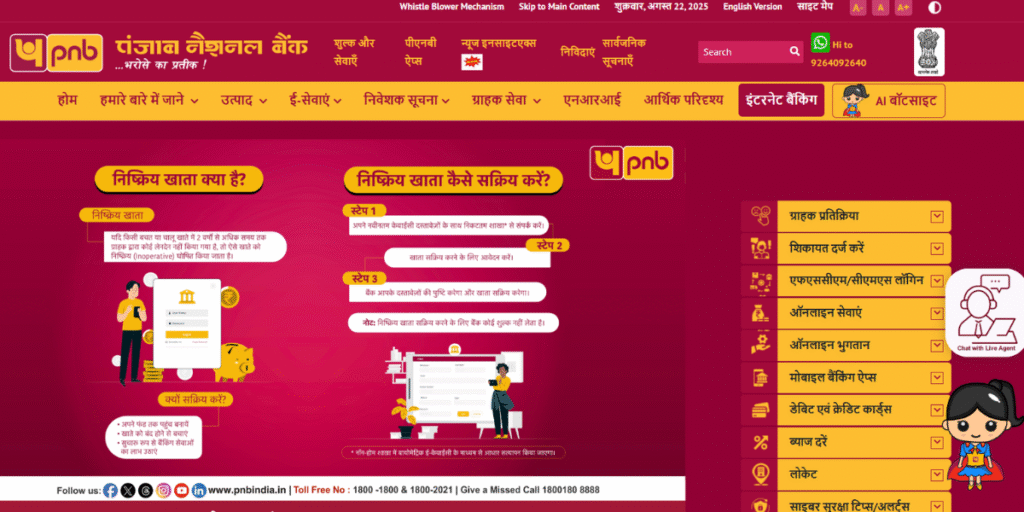
- CEO: Shri Ashok Chandra
- Branches: 10,189+
- Headquarters: New Delhi
- Established In: 1894
PNB was founded by Lala Lajpat Rai and other freedom fighters and is one of India’s oldest banks with a rich history. Being the second-largest public sector bank, it boasts a total asset base of ₹18.18 lakh crore. PNB has a strong network of more than 10,000 branches and 1,02,746 employees, catering to a vast customer base. Also, its latest mergers with Oriental Bank of Commerce and United Bank of India have hugely increased its size and service base, establishing it as a leading name in govt banks in India.
3. Bank of Baroda (BoB)

- CEO: Shri Debadatta Chand
- Branches: 9,693+
- Headquarters: Vadodara, Gujarat
- Established In: 1908
Bank of Baroda was founded by Maharaja Sayajirao Gaekwad III. It is a big global bank with a strong presence in India and overseas. The bank operates an international network of branches in 17 countries, providing the complete range of financial services.
With the merger of Dena Bank and Vijaya Bank in 2019, BoB emerged as India’s third-largest public sector bank. With 10,000+ ATMs and a robust digital banking emphasis, BoB is a strong competitor on the list of indian govt banks.
4. Canara Bank

- CEO: Shri K. Satyanarayana Raju
- Branches: 9,861+
- Headquarters: Bengaluru
- Established In: 1906
Canara Bank, a veteran nationalized bank, is headquartered in the technology hub of Bengaluru. It has a pervasive network of ATMs and branches, and its operations have become extremely broad with the merger of Syndicate Bank in 2020.
Canara Bank is the employer of more than 81,000 employees and has a complete array of retail and corporate banking products and services. Further, its stable emphasis on technology and its mergers on a strategic basis have placed it firmly on the list of govt banks in India.
5. Union Bank of India

- CEO: Shri A. Manimekhalai
- Branches: 8,621+
- Headquarters: Mumbai
- Established In: 1919
Union Bank of India has emerged as one of the biggest public sector banks following its merger with Andhra Bank and Corporation Bank in 2020. The merger strengthened its presence to over 8,600 branches and over 73,000 employees. It is involved in the implementation of government schemes and provides a variety of banking products and services to corporate and retail customers, further establishing itself on the govt banks in India list.
6. Indian Bank
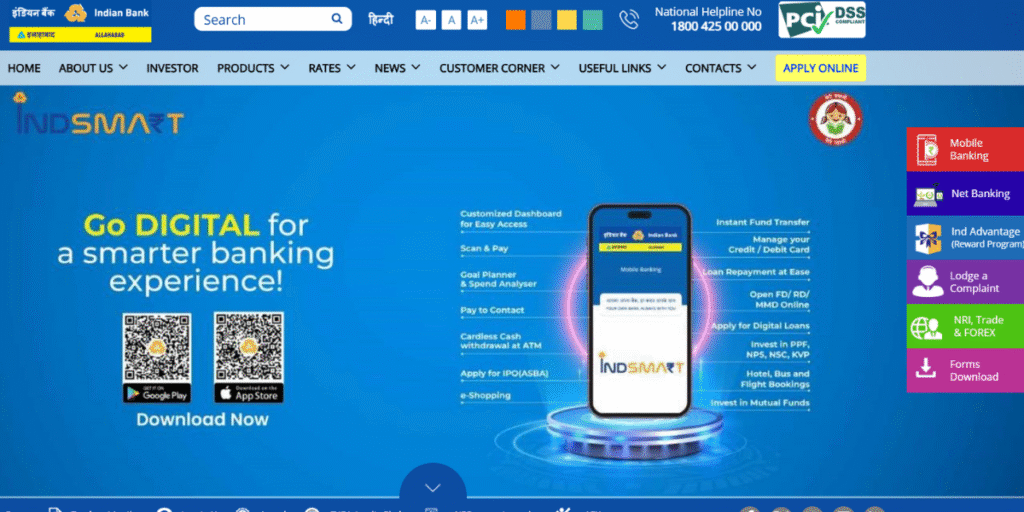
- CEO: Shri Binod Kumar
- Branches: 5,909+
- Headquarters: Chennai
- Established In: 1907
Following its merger with Allahabad Bank in 2020, Indian Bank became one of the top PSBs in the nation. It has a strong presence in South India but has spread its wings all over the country. With a thrust on technology-based solutions and microfinance, Indian Bank has a broad customer base. The merger has provided it with a bigger asset base and a stronger branch network, and it has become a force to reckon with on the list of govt banks in India.
7. Bank of India (BoI)

- CEO: Shri Rajneesh Karnatak
- Branches: 5,100+
- Headquarters: Mumbai
- Established In: 1906
Bank of India has a rich and long history, having been established by a band of leading businessmen. It was the first Indian bank to establish a branch in London in 1946. It has an extensive network of domestic and overseas branches today, catering to more than 50 million customers. It provides an exhaustive range of products, such as retail, corporate, and online banking, and is an essential part of the list of govt banks in India.
8. Central Bank of India
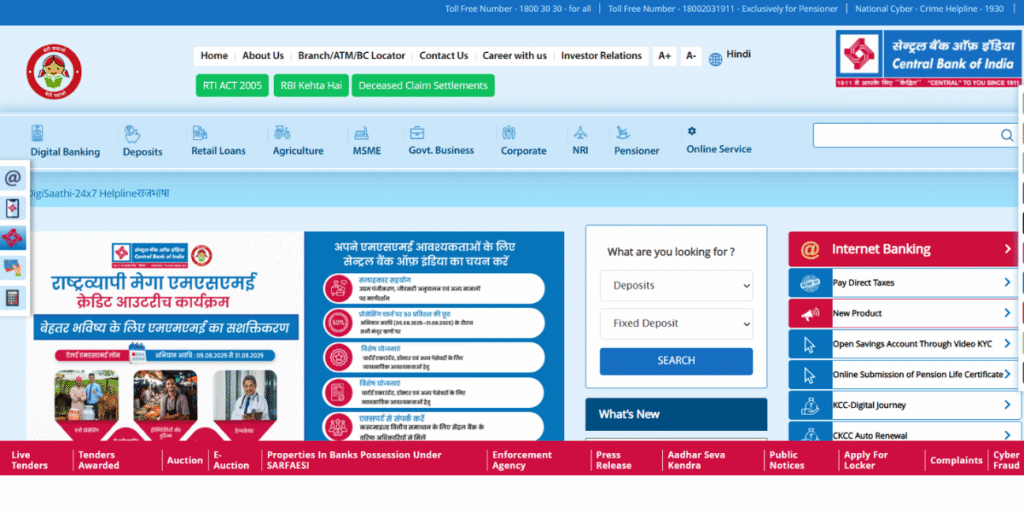
- CEO: Shri M. V. Rao
- Branches: 4,541+
- Headquarters: Mumbai
- Established In: 1911
Central Bank of India takes the credit of being India’s first commercial bank that was owned and operated by Indians. The bank has a strong presence in all states and Union Territories.
It has a strong orientation towards financial inclusion and priority sector lending to sectors such as agriculture and small-scale industries. Its rich heritage and pan-India presence make it a significant member of the list of govt banks in India.
9. UCO Bank

- CEO: Shri Ashwani Kumar
- Branches: 4,500+ (approx.)
- Headquarters: Kolkata
- Established In: 1943
UCO Bank was founded by Ghanshyam Das Birla, a well-known industrialist. It has a powerful presence in the eastern and northeastern regions of India. Focusing on modernizing its services and enhancing asset quality, UCO Bank is looking to strengthen its market position.
It offers a large spectrum of products and services to its clientele, and its social banking is evident from the fact that it has been included in the list of govt banks in India.
10. Bank of Maharashtra

- CEO: Shri Nidhu Saxena
- Branches: 2,641+
- Headquarters: Pune
- Established In: 1935
Bank of Maharashtra possesses the largest network of any nationalized bank in the state of Maharashtra. The bank’s overall business exceeded ₹5.46 lakh crore in 2025, and it has served millions of customers. It focuses mainly on offering financial support to small enterprises and entrepreneurs. The bank’s strong presence in its native state makes it a key regional player in the list of govt banks in India.
11. Punjab & Sind Bank
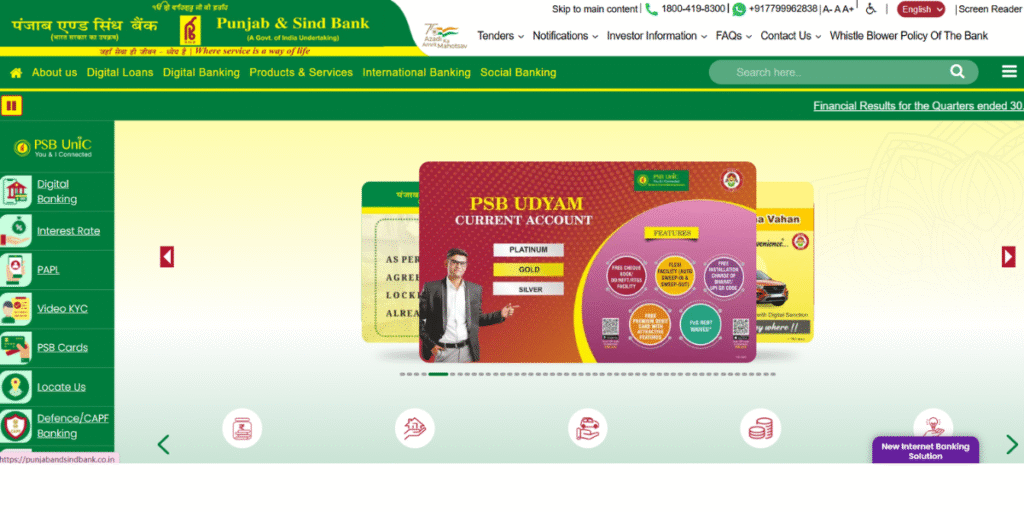
- CEO: Shri Swarup Kumar Saha
- Branches: 1,570+
- Headquarters: New Delhi
- Established In: 1908
Punjab & Sind Bank was formed to meet the banking requirements of the erstwhile combined Punjab and Sind areas. It has a density of branches in Punjab, with more than 635 branches in the state. The bank offers diverse retail as well as corporate banking products and is part of the public sector banking system. Even though it is relatively minor, it is an important one on the list of govt banks in India.
Which Indian Govt Bank is Best?
How to determine the “best” government bank is subjective and depends on a person’s individual requirements since every government bank has its own strengths. Yet, some are notable for their size, spread, and performance.
- State Bank of India (SBI) – A leading candidate, SBI’s dominance cannot be denied. Being the biggest network of branches and having an impressive international presence in 29 nations, it gives unmatched reach and reliability. Also, its vast array of products and services, ranging from retail to corporate banking, meets nearly every financial requirement. SBI’s gigantic size and long history as a stable institution render it a favorite among all.
- Bank of Baroda (BoB) – With its resilient international reach being its distinguishing feature, BoB is the perfect option for international banking requirements of enterprises. Having weathered its recent mergers, it has got stronger in its local presence and boasts a wide array of services, a resilient digital banking offering being one of them. Its focus on customer experience and technology adoption has positioned it as a strong contender.
- PNB, Canara, Union Bank – These three banks are very well known for their retail and corporate competencies. PNB, with its previous experience, has a very rich portfolio of financial services. Canara Bank is very well known for its technology know-how and its South India presence. Union Bank, having recently merged at a larger scale, has a robust infrastructure to serve individual and business clients. The three combined have a dominant influence in public sector banking.
Comparison Table: Govt Banks in India (2025)
| Name | Founded In | HQ Location | Strengths |
| State Bank of India (SBI) | 1955 | Mumbai | Largest bank by assets and network; strong government backing and brand trust; extensive international presence and diversified product portfolio. |
| Punjab National Bank (PNB) | 1894 | New Delhi | Rich historical legacy; second-largest PSB; strong focus on retail, corporate, and agricultural banking; significant digital adoption. |
| Bank of Baroda (BoB) | 1908 | Vadodara, Gujarat | Robust domestic and international presence with branches in 17 countries; strong focus on retail and digital banking; third largest on the list of govt banks in india. |
| Canara Bank | 1906 | Bengaluru | Known for its technological advancements and strong presence in South India; has a wide range of services including MSME financing and retail banking. |
| Union Bank of India | 1919 | Mumbai | A large and stable bank post-mergers; strong nationwide presence and focus on financial inclusion and government schemes. |
| Indian Bank | 1907 | Chennai | Gained significant size and reach after merging with Allahabad Bank; strong focus on microfinance and technology-driven banking solutions. |
| Bank of India (BoI) | 1906 | Mumbai | One of the oldest banks in India with a wide international footprint; offers a comprehensive range of products for personal, corporate, and SME clients. |
| Central Bank of India | 1911 | Mumbai | Known for its historical significance as a wholly Indian-owned bank; significant outreach in rural and semi-urban areas. |
| UCO Bank | 1943 | Kolkata | Focuses on financial inclusion and rural development; offers a variety of retail and corporate banking products. |
| Bank of Maharashtra | 1935 | Pune | Largest branch network within the state of Maharashtra; strong focus on providing credit to small businesses. |
| Punjab & Sind Bank | 1908 | New Delhi | High concentration of branches in North India, especially Punjab; provides essential banking services to a wide customer base. |
Recent Mergers & Consolidations of Govt Banks
The govt of India has been actively consolidating the PSBs in order to form stronger and more competitive banks that can compete with the global banks. This process, which intensified in the late 2010s, has brought down the number of PSBs considerably and has altered the list of government banks in India. The economies of scale, operational efficiency, and improved risk management have been the emphasis of the mergers.
- Dena Bank & Vijaya Bank: Merged into Bank of Baroda in 2019 to form India’s third-largest public sector bank.
- Oriental Bank of Commerce (OBC) & United Bank of India: Merged into Punjab National Bank (PNB) in 2020 to become PNB, the second-largest PSB.
- Andhra Bank & Corporation Bank: Merged into Union Bank of India in 2020, which is currently one of the top five PSBs.
- Syndicate Bank: Merged with Canara Bank in 2020 to strengthen its presence in the South and increase its pan-India reach.
- Allahabad Bank: Merged into Indian Bank in 2020 to provide it with a greater presence in North and East India.
Conclusion
The govt banks in india list is proof of the country’s dedication to financial inclusivity and economic security. Though there is a role for private banks, PSBs remain the backbone of the Indian financial sector, touching the lives of millions of people in urban and rural India. The spate of mergers recently has strengthened them and made them more competitive, paving the way for a new growth phase.
As the Indian economy keeps growing, these banks will definitely be playing an increasingly important role in determining the course of the economy and making sure that all Indians are able to access basic banking services.
FAQs
1. What is a public sector bank?
A public sector bank is a bank in which the government has a majority holding of over 50%, which provides it with extensive control over the affairs of the bank and policy.
2. How many government banks exist in India as of 2025?
As of 2025, there are 12 public sector banks in India, a figure that has been achieved during a time of significant consolidation and mergers.
3. What is the largest government bank in India?
State Bank of India (SBI) is India’s largest public sector bank, with its vast network, market share, and significant presence globally.
4. What is the principal distinction between a PSB and a private bank?
The principal distinction is one of ownership and purpose: PSBs are government-owned majority with a social welfare orientation, whereas private banks are privately owned and profit-oriented.
5. Why did the government consolidate so many banks?
The government consolidated public sector banks to form larger, more powerful, and more efficient banks, which can compete with private and foreign banks more effectively and handle the cost of operations better.
